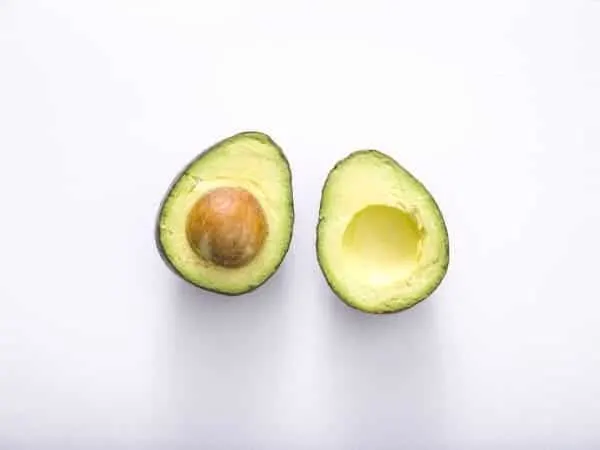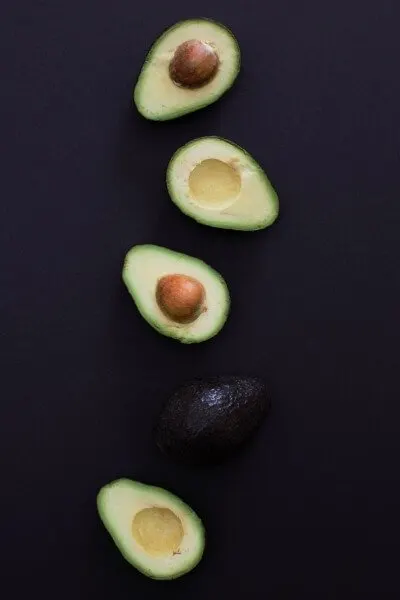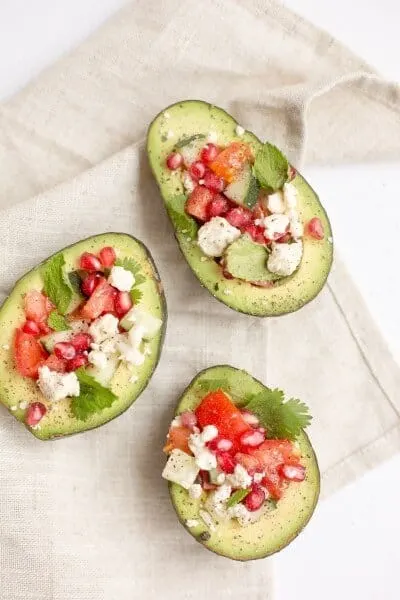Avocados are one of the more expensive fruit, and finding a good deal on them isn’t that easy. But you’ve stumbled upon one on the farmer’s market or your local grocery store, and you were ready. You’ve bought a bunch of avos instead of the usual two or three, and are a bit worried that some of them won’t last enough for you to use them. Can avocados go bad?
In this article, we cover everything you need to know related to storage, shelf life, and signs of going bad of avocados. After reading it, you should be well equipped to make the most of your abundance of avocados. Sounds interesting? Read on.

Can Avocado Go Bad? How To Tell If an Avocado Is Bad?
Like all fruits, avocados go bad. And they definitely don’t belong to fruit that you can store for months in proper conditions, like apples. Knowing that, how do you know if your avocado is off?
Avocados can be straight off bad, or merely overripe. If there’s white fuzzy mold on the skin or flesh, or the flesh turned almost black, the fruit is spoiled, and you should get rid of it. Same thing if it smells sour or rancid.
If neither of these signs of spoilage is present, your avocado is overripe at worst. Signs of an overripe avocado include ([LOT]):
- mushy or soft outer skin
- browning flesh
- fibrous strings in the flesh (it’s not a result of overripeness, but the consequences are the same)
Such avocado is still edible, but you might decide to discard it for quality reasons. If only a few small areas are brown, you can cut them off, and enjoy the rest. If those areas are quite large, you can scoop the “good” green parts using a spoon and dump the rest. Slightly brown flesh isn’t unsafe to eat by any means, but in my experience it tastes terrible, and I always discard it.
When it comes to stringy flesh, it’s okay to eat it, but if you’re like me, you won’t find it appealing at the very least. Fortunately, fibrous strings in avocado aren’t that common ([CA]).
To take your best shot at buying fresh avocados, buy ones that are unripe and let them ripen. If you’re buying avos that are already ripe, you might end up with overripe ones that you will have to discard most of. Even if the fruit seems okay on the outside, it might’ve started browning inside.

How Long Do Avocados Last?
Before we get into the nitty-gritty, the first thing you need to know is how to tell if an avocado is ripe. The way to go about that is by gently squeezing the fruit in your palm ([ILA]). If it’s quite firm but also slightly yields to pressure, it’s ripe. Many articles talk about the color of the fruit, but it isn’t a consistent sign of ripeness. Colors vary slightly from fruit to fruit, and if two specimens look the same, it doesn’t necessarily mean both are the same in terms of ripeness.
Unripe avocados need between two days to a week to ripen. Whenever you buy a firm avocado, there’s no way of telling how long it will take to ripen. You keep them at room temperature and check for ripeness each day. If you need to speed up the process, keep the fruits in a sealed brown ([ILA]), plastic or freezer bag, or store them with an apple or a banana. The ethylene that those fruits produce will speed up the process.
A ripe avocado should retain quality for 3 to 5 days in the fridge, depending on the fruit and how ripe it was when you transferred it to the refrigerator. Over time, the flesh will begin to brown, usually starting from the stem. That means a ripe avocado is best fresh, and if you keep it in storage for a couple of days, it might have some overripe parts that you’ll have to discard.
When it comes to cut avocados, they brown quite fast, and it’s best to use them within 1 to 2 days of cutting.
Interested in avocado oil? Here’s our guide to the shelf life of avocado oil.

How To Store Avocados?
Unripe avocados should sit at room temperature. It might be tempting to put them right into the fridge, but that’s a bad idea. Refrigerating an unripe avocado might result in stopping the ripening process. And if you didn’t know, a firm avocado is a pain to peel and consume. Plus you’re not getting any of that smooth texture you’re likely after. A fruit basket on the counter in the kitchen is an excellent spot for an unripe avocado.
Ripe avocados need refrigeration to retain quality. The vegetable drawer is a good place to keep them unless there already are any other ethylene-producing fruits or veggies.
For cut avocados, keep them in a sealed environment in the fridge. That means an airtight container or a freezer bag. They still start to brown quickly, but there’s a way to prevent discoloration or at least delay it. All you need to do is to sprinkle some acidic liquid on the exposed area of the fruit ([ILA][CA]). You can use lemon juice, lime juice, or even white vinegar, although the last one might not compliment that avocado’s flavor that great.
It’s likely that there still will be some brown areas after refrigerating the cut fruit. Remove those with a teaspoon and enjoy the rest.
If the given storage times are not long enough for your needs, consider freezing the avocados.

Can You Freeze Avocados? How To Do It?
First of all, if you need the avocados to make guacamole, it’s probably better to make that guac and freeze it, instead of freezing only the avos.
Second, the best and probably easiest way to freeze avocados is to freeze them in puree form. Here’s how to go about it ([CA]):
- Wash the fruit, cut in half, and remove the seed. Scoop the flesh with a spoon.
- Add one tablespoon of lemon or lime juice per two avocados to the flesh.
- Puree everything. You can use a blender, a hand blender, or even run it down with a fork.
- Portion the puree into airtight containers. Make sure to leave some headspace in each container. If you already know how you’re going to use the frozen and thawed avocados, it’s best to portion them accordingly now for easy thawing. Feel free to sprinkle the puree with the lemon or lime juice after portioning, so the top doesn’t brown.
- Seal the containers. Add labels with name and date if you find it useful.
- Place the containers in the freezer.
Frozen and thawed avocados, unlike most fruit, work quite well in salads and dips. To thaw the puree leave the container overnight in the fridge. Or in cold water for a couple of hours if time is at a premium.
In a Nutshell
- You should discard moldy, rotten, or off-smelling avocados. Brown flesh is safe to eat, but doesn’t taste that good; cut off browned areas or scoop healthy green ones if the meat has started browning.
- Unripe avocados take 2 to 7 days to ripen, and you should store them at room temperature.
- Ripe avocados stay at peak quality for 3 to maybe 5 days if you refrigerate them.
- Cut avocados should be chilled in the fridge for a day or two. They start browning fast, but you can delay that by sprinkling it with lemon or lime juice.
- If you have too many avocados on your hand, puree them and freeze.